Blog
Jewellok is a professional pressure regulator and valve manufacturer and supplier.

How Do Dual-Stage High-Pressure Argon Regulators Differ from Single-Stage Models in Terms of Pressure Stability and Flow Control Precision?
- Pressure Regulator Valve Manufacturer
- 316L Stainless Steel Gas Pressure Regulators, application of ultra-high purity gas pressure regulator, argon gas pressure regulator, Argon Regulator, argon regulator for mig welder, Argon Regulator for TIG Welding, Argon Regulator with Dual Flow Meter, argon regulator with flow meter, argon regulators, BA Grade High Purity Gas Pressure Regulators, best high flow UHP gas pressure regulator industry, best high purity gas pressure regulator, best high purity gas pressure regulators manufacturer, best high-pressure gas regulators for industrial use, can industrial gas regulator be used in laboratory, China Customized Back Gas Pressure Regulator Manufacturers, China Industrial Gas Valve Manufacturer, Dual Flow Argon Regulator, Dual Output Argon Regulator, dual-stage argon regulators, dual-stage high-pressure argon regulators, dual-stage high-pressure regulators, dual-stage regulators, europe industrial diaphragm valve manufacturer, Gas changeover manifold for industrial applications, gas pressure regulator, high pressure argon regulator, High Pressure Argon Regulator Factory, High Pressure Argon Regulator Manufacturer, High Pressure Regulators, high purity argon regulator, high-pressure argon regulators, Industrial air pressure regulator manufacturer in china, industrial diaphragm valve, Industrial Filling CNG Valve, Industrial Flow Control Valves, Industrial gas changeover system, Industrial gas manifold, industrial gas pressure regulator, Pressure Argon Regulator, Single Stage Argon Regulators, single-stage high-pressure argon regulators
- No Comments
How Do Dual-Stage High-Pressure Argon Regulators Differ from Single-Stage Models in Terms of Pressure Stability and Flow Control Precision?
In industries ranging from welding and metal fabrication to scientific research and semiconductor manufacturing, argon gas plays a pivotal role as an inert shielding agent. Stored in high-pressure cylinders typically at 2,000 to 3,000 pounds per square inch (psi), argon must be delivered at much lower, controlled pressures—often between 5 and 50 psi—for safe and effective use. This is where gas regulators come into play, serving as the critical interface between the high-pressure source and the end application. Among the various types, single-stage and dual-stage (also known as two-stage) regulators are the most common for argon systems. While both reduce pressure, they differ significantly in design, performance, and suitability for specific tasks.
This article delves into the nuances of these regulators, focusing on dual-stage high-pressure argon regulators applications. We will explore how dual-stage models outperform single-stage ones in pressure stability and flow control precision, and identify the operating conditions where the added complexity of a dual-stage design proves advantageous. Understanding these differences is essential for professionals in welding, laboratory settings, or industrial processes, as improper regulation can lead to inconsistent results, equipment damage, or safety hazards. By examining their mechanics, components, and real-world implications, we aim to provide a comprehensive guide that empowers users to select the right regulator for their needs.
Argon, a noble gas, is prized for its non-reactive properties, making it ideal for TIG (Tungsten Inert Gas) welding, where it prevents oxidation, or in gas chromatography, where precise flow is crucial for accurate separations. High-pressure cylinders ensure efficient storage, but without proper regulation, the gas could overwhelm downstream equipment. Single-stage regulators offer a straightforward solution, reducing pressure in one step, while dual-stage versions employ two sequential reductions for enhanced control. The choice between them hinges on factors like pressure variability tolerance, flow demands, and environmental conditions. As we proceed, we’ll break down these aspects in detail, drawing on engineering principles and industry insights.
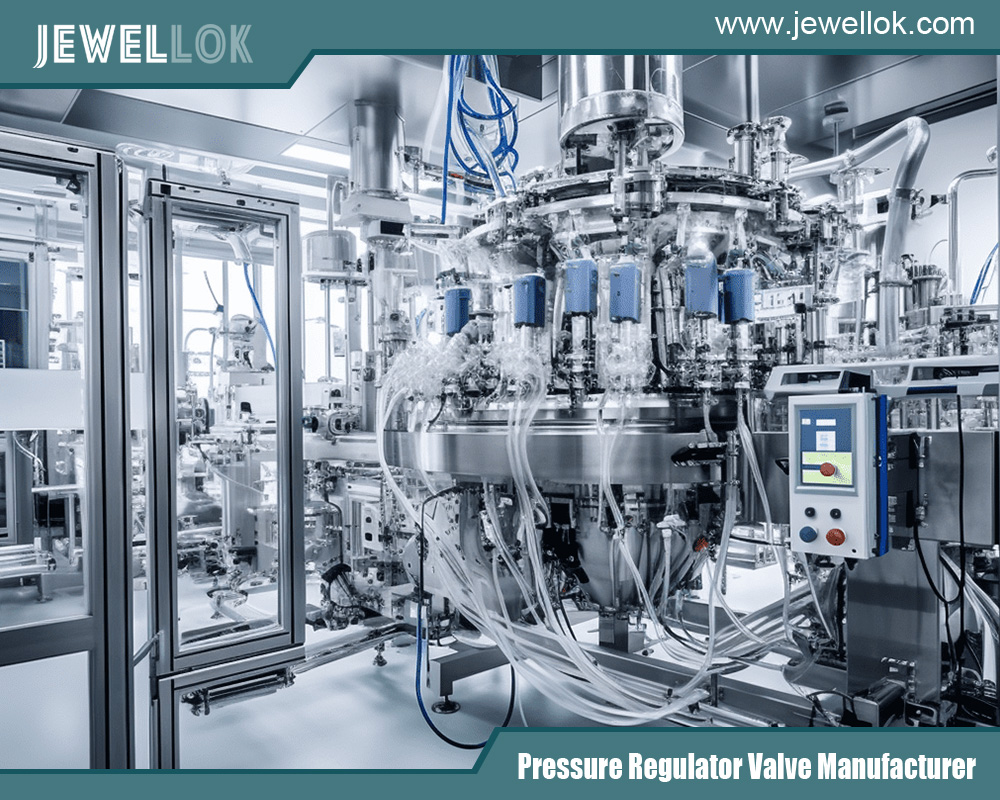
Background and Evolution of Gas Regulators
The development of gas regulators traces back to the 19th century, paralleling the industrialization of gas usage for lighting and heating. Early designs, such as those by Robert Bunsen for laboratory burners, relied on basic valve mechanisms to control flow. By the early 20th century, with the advent of compressed gases like argon—discovered in 1894 and commercialized shortly after—regulators evolved to handle higher pressures safely.
Argon regulators specifically emerged in the mid-20th century alongside advancements in welding technologies during World War II. Single-stage models were the initial standard, prized for their simplicity in portable setups. However, as applications demanded greater precision—such as in aerospace welding or analytical instrumentation—dual-stage regulators gained prominence. These incorporate lessons from natural gas and oxygen systems, adapting to argon’s high cylinder pressures and low delivery requirements.
Standards from organizations like the Compressed Gas Association (CGA) and the American National Standards Institute (ANSI) govern regulator design, ensuring compatibility with CGA connections (e.g., CGA-580 for argon). Materials like brass, stainless steel, and elastomers are chosen for corrosion resistance, given argon’s inert but potentially contaminating nature if mixed with impurities. Over time, features like built-in gauges, filters, and overpressure protection have been integrated, reflecting a shift toward reliability in diverse environments.
In comparison, single-stage regulators are akin to basic throttles, while dual-stage ones resemble cascaded control systems in process engineering. For high-pressure argon, where inlet pressures can fluctuate from 3,000 psi full to under 500 psi near empty, this evolution underscores the need for stability in demanding operations.
Basic Principles of Pressure Regulation
Pressure regulation fundamentally involves balancing forces to maintain a desired outlet pressure despite variations in inlet pressure or flow demand. In fluid mechanics, this adheres to principles like Bernoulli’s equation, where pressure and velocity interplay, but regulators primarily use mechanical feedback.
Key concepts include:
- Droop: The decrease in outlet pressure as flow rate increases. High droop leads to instability.
- Lock-Up: The slight pressure rise above setpoint needed to fully close the valve.
- Supply Pressure Effect (SPE): How outlet pressure changes with inlet variations. Lower SPE indicates better isolation.
Single-stage regulators exhibit higher droop and SPE because the sensing element directly experiences inlet fluctuations. Dual-stage models minimize these by intermediate pressure reduction, achieving tighter control.
For argon, which expands adiabatically upon release, temperature drops can affect pressure (Joule-Thomson effect), exacerbating instability in single-stage units. Precision is quantified in terms like ±1% stability, crucial for flow control in applications where even minor variations alter weld quality or analytical accuracy.
Components and Mechanism of Single-Stage Argon Regulators
A single-stage high-pressure argon regulator is compact, typically featuring:
- Inlet Connection: CGA-580 fitting for secure attachment to the cylinder.
- High-Pressure Gauge: Measures inlet pressure (0-4,000 psi scale).
- Valve Assembly: A poppet or needle valve with a seat, controlled by a diaphragm.
- Diaphragm: Flexible membrane sensing outlet pressure.
- Spring: Provides reference force, adjustable via a knob.
- Low-Pressure Gauge: Shows delivery pressure (0-100 psi or similar).
- Outlet Port: For hose or flowmeter connection.
- Vent/Relief: For overpressure safety.
Operation: High-pressure argon enters, pushing against the closed valve. Adjusting the spring compresses the diaphragm, opening the valve. Gas flows to the outlet, building pressure that opposes the spring until equilibrium. Changes in flow or inlet cause readjustments, but with notable droop—e.g., outlet might drop 5-10 psi at high flow.
Pros: Affordable ($50-150), lightweight, suitable for short-duration tasks. Cons: Sensitive to cylinder depletion, leading to pressure creep or sag.
Components and Mechanism of Dual-Stage High-Pressure Argon Regulators
Dual-stage regulators build on single-stage but add a first stage:
- First Stage: Reduces inlet to ~200-500 psi intermediate pressure. Includes its own valve, diaphragm, and fixed spring (non-adjustable).
- Second Stage: Further reduces to final pressure, with adjustable spring and gauges for both stages.
- Interconnecting Chamber: Links stages, isolating the second from inlet swings.
- Additional Gauges: Often three—high, intermediate, low.
- Filters and Purifiers: Common for argon purity.
Mechanism: Argon enters the first stage, reduced to intermediate via fixed regulation. This stable intermediate feeds the second stage, which fine-tunes to setpoint. The dual process decouples outlet from inlet, minimizing SPE to <1 psi per 100 psi inlet change, versus 5-10 psi in single-stage.
Pros: Superior stability, less frequent adjustments. Cons: Bulkier, costlier ($200-500), more complex maintenance.
Comparative Analysis: Pressure Stability and Flow Control Precision
Pressure stability refers to maintaining consistent outlet pressure amid disturbances. Single-stage regulators suffer from higher SPE; as argon cylinder pressure drops from 3,000 to 500 psi, outlet might rise 10-20% due to reduced force on the valve seat. Dual-stage models, by contrast, hold within ±0.5-2%, as the first stage absorbs variations, delivering near-constant intermediate pressure.
For flow control precision, droop is key. In single-stage, high flow (e.g., 50 scfh for welding) can cause 5-15 psi droop, leading to inconsistent shielding and weld defects. Dual-stage exhibits <2 psi droop, enabling precise metering via flowmeters. This precision is vital for argon, where flow rates of 10-30 cfh are typical; variations can introduce oxygen contamination.
Quantitatively, a single-stage might vary ±5-10% in flow, while dual-stage achieves ±1-2%, per industry tests. In high-pressure argon, dual-stage reduces surges, saving gas and enhancing efficiency.
Operating Conditions Where Dual-Stage High-Pressure Argon Regulators Designs Are More Advantageous
Dual-stage regulators excel in scenarios demanding unwavering performance:
- Precision Welding (TIG/MIG): In aerospace or automotive fabrication, consistent argon flow prevents porosity. Single-stage suffices for hobbyists, but pros prefer dual for long sessions where cylinder pressure drops.
- Laboratory and Analytical Applications: Gas chromatography or mass spectrometry requires stable flows (0.1-10 ml/min). Dual-stage minimizes baseline drift, essential for accurate readings.
- High-Volume or Extended Use: When cylinders empty over hours/days, dual-stage avoids readjustments, unlike single-stage’s creeping pressure.
- Variable Environmental Conditions: Cold temperatures lower argon pressure; dual-stage compensates better, ideal for outdoor or unheated labs.
- High-Purity Systems: In semiconductors, dual-stage with purifiers maintains inertness, preventing contamination from pressure fluctuations.
- Medical and Pharmaceutical: Though argon is less common, similar gases benefit from dual-stage for ventilator calibration or sterile processes.
In contrast, single-stage suits intermittent, low-precision tasks like basic welding or balloon filling, where cost and portability matter more.
Case study: In TIG welding aluminum, dual-stage ensures steady 15-20 cfh flow, reducing defects by 20-30% versus single-stage variability.
Maintenance, Safety, and Best Practices
Both types require annual inspections: Check gauges, test for leaks with soap solution, replace diaphragms every 5 years. Dual-stage needs intermediate chamber cleaning to prevent blockages.
Safety: Use argon-rated regulators to avoid material incompatibilities. Ventilate areas to prevent asphyxiation. Dual-stage’s stability reduces overpressure risks, but always secure cylinders.
Follow CGA guidelines; never interchange with other gases.
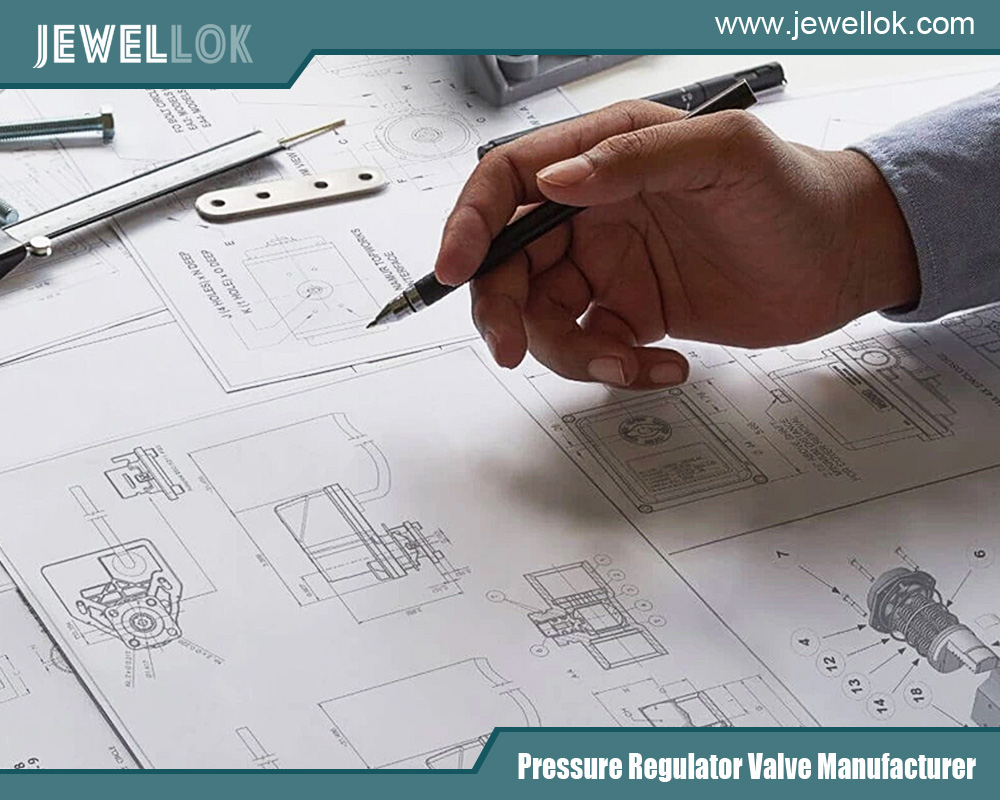
Conclusion
Dual-stage high-pressure argon regulators surpass single-stage models in pressure stability—maintaining tight tolerances against inlet variations—and flow control precision, with minimal droop for consistent delivery. This makes them indispensable in precision welding, analytical labs, extended operations, and variable environments, where reliability outweighs added cost and complexity. For casual or stable conditions, single-stage suffices, but as demands escalate, dual-stage ensures optimal performance and safety. Selecting the right regulator not only enhances efficiency but safeguards processes reliant on argon’s inert prowess. In an era of advancing technologies, understanding these differences equips users to harness gas systems effectively.
For more about how do dual-stage high-pressure argon regulators differ from single-stage models in terms of pressure stability and flow control precision, you can pay a visit to Jewellok at https://www.jewellok.com/ for more info.
Recent Posts
How a Gauged Two-Stage Propane Gas Pressure Regulator Works
The Best Natural Gas Pressure Regulators Manufacturers in USA
How to Choose the Right Laboratory Gas Valves
The Top High Pressure Hydraulic Needle Valve Manufacturer in 2025
Why the Top Companies Choose Ultra-High Purity Diaphragm Valves
How to Choose the Material Properties of Ball Valve Core?
Tags
Recommended Products
-

Stainless Steel Mini Elbow Mini Tee Mini Cross Mini Tribow Ultrahigh Purity Mini Butt Weld Fittings
-

JF Series In-Line Gas Filters | High Purity High Precision High Flow Semiconductor Gas Filter Gas Filtration & Purification
-
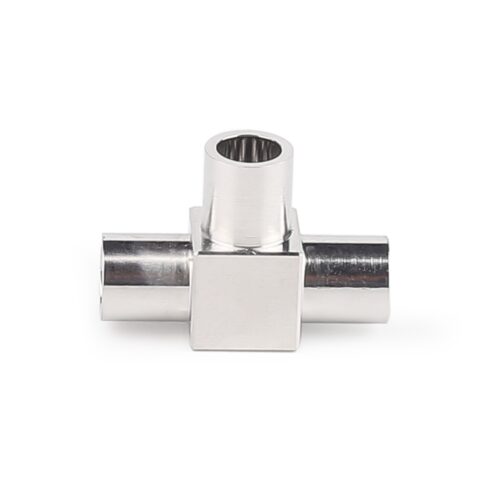
Stainless Steel Ultra High Purity Mini Butt Weld Mini Tee Reducer MTRW Series Fittings
-
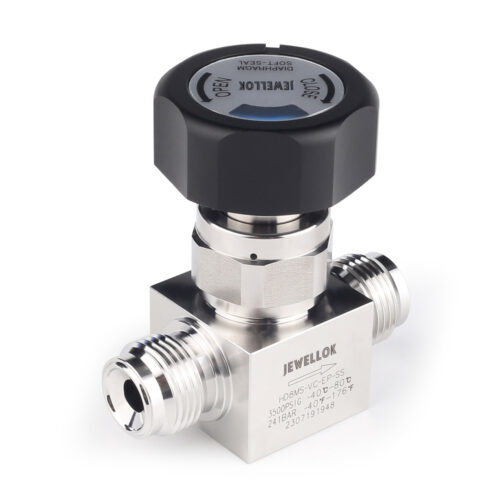
Stainless Steel Ultra High Purity (UHP) High Pressure Manual Diaphragm Valve
-
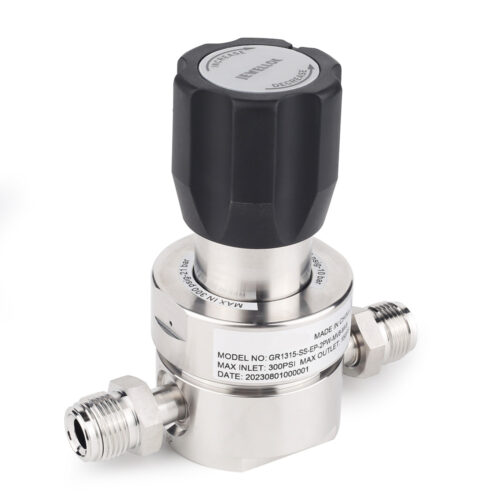
JR1300 Series Ultra High Purity Single Stage Regulator High Flow Line Regulator For Ultra High Purity Intermediate Flow
-
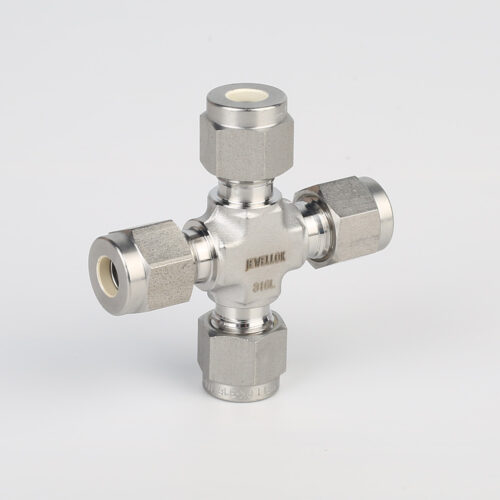
7102L Stainless Steel 316L SS Union Cross Ultra High Purity Long Arm Union Elbow Tee Cross Butt Weld Fittings
-

DPR1 Ultra High Purity Two Stage Dual Stage Pressure Reducing Regulator Semiconductor Grade Regulators
-

767LP Port Connector Ultra High Purity VCR Metal Gasket Face Seal Tube Fittings